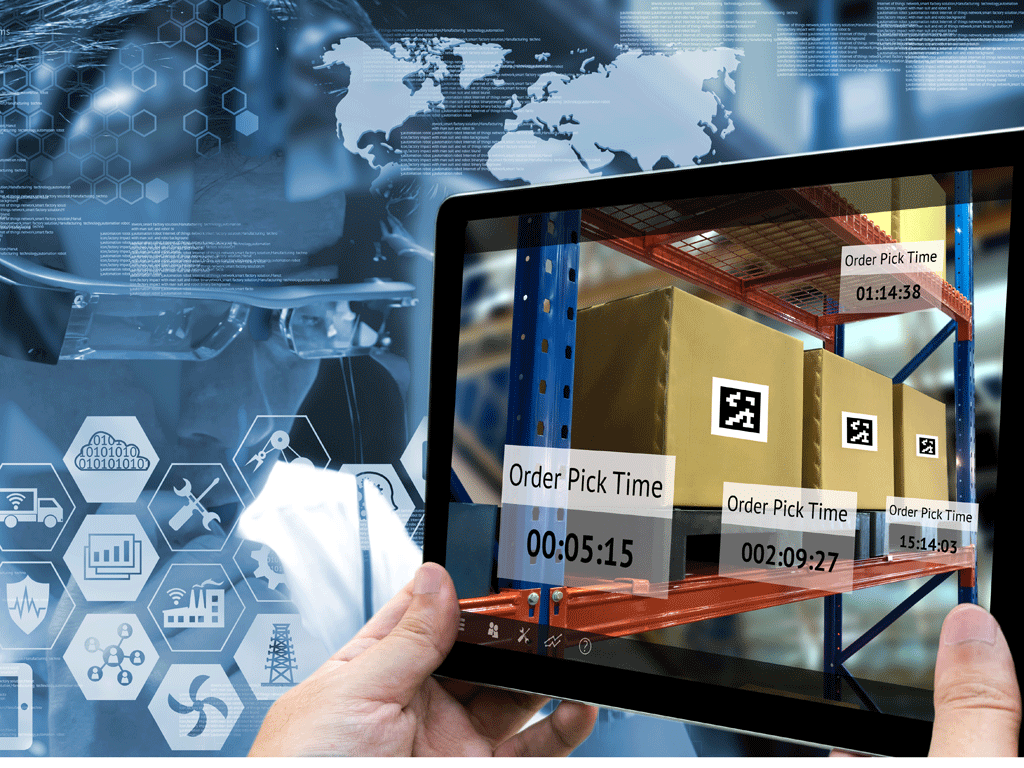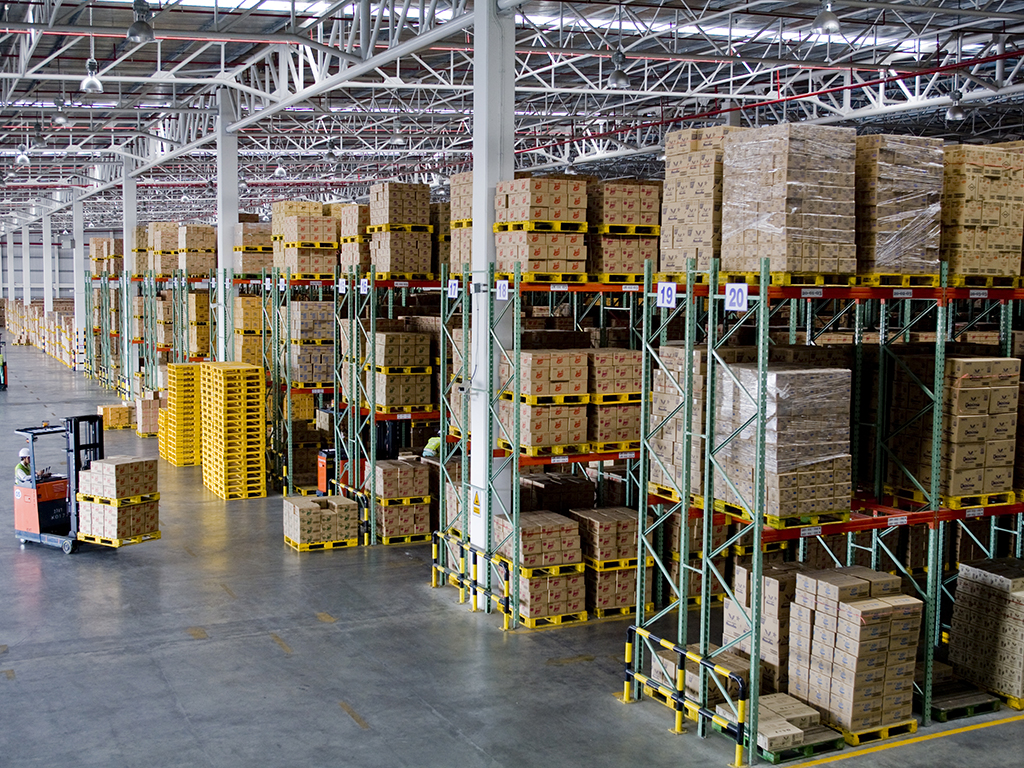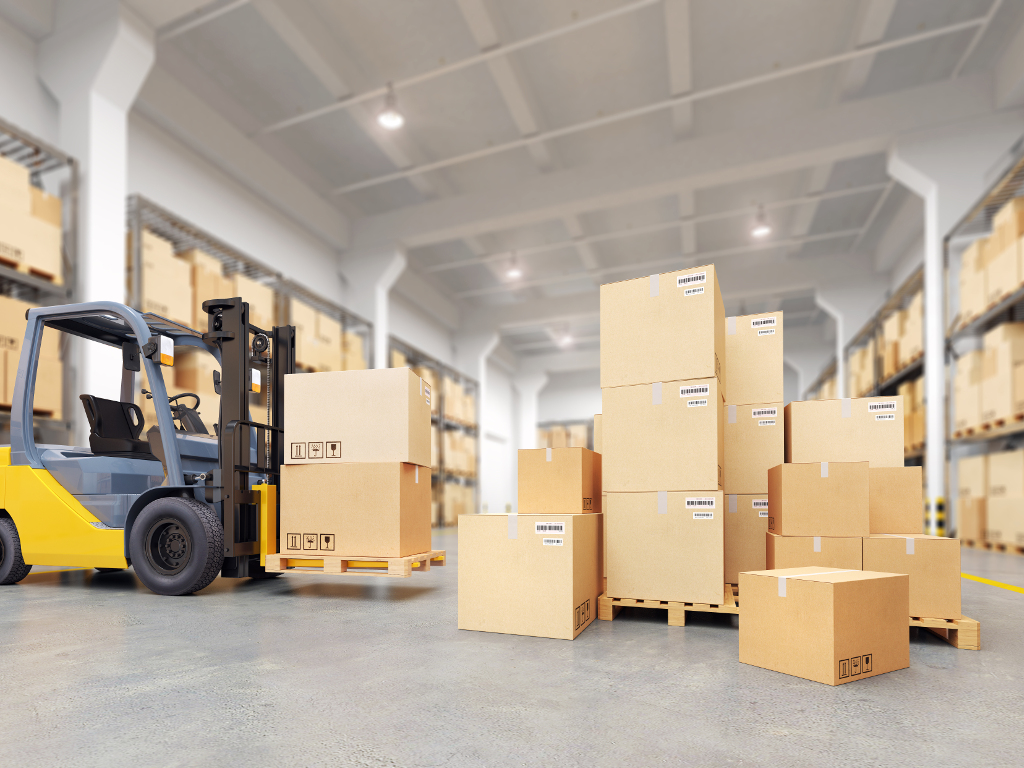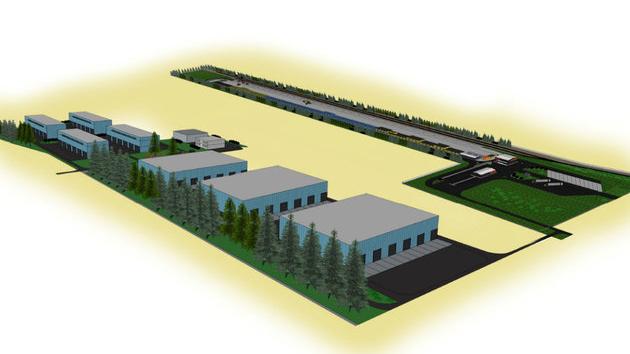Robots and Drones in Warehouses Are Not a Distant Future – Prices of Warehouse Equipment Jump by up to 30%
Source: eKapija
 Thursday, 28.04.2022.
Thursday, 28.04.2022.
 14:58
14:58
 Thursday, 28.04.2022.
Thursday, 28.04.2022.
 14:58
14:58
(Photo: Maxim Blinkov/shutterstock.com)

Online sale has opened the door to the implementation of modern technological solutions, and the automation of warehouse equipment is continuing. Serbia is a bit behind the world in this area, although it is possible to buy the most modern warehouse equipment in our country too. The bad news is that, in the past year, there has been a considerable increase in the prices of warehouse equipment in the market. For certain equipment parts, the price increase went up to 30%.
We talked about this, but also about innovations in warehouse equipment and the most frequent mistakes that companies make when it comes to equipping warehouses with Dr Sanja Bojic, a professor at the Faculty of Technical Sciences at the University of Novi Sad.
How important is warehouse equipment in the operations of a company? What should companies pay attention to?
– Warehousing is a process that doesn’t add value to products. For that reason, it always needs to be seen as an expenditure. In that sense, making an adequate choice, and then later optimizing each segment of a warehouse system (utilization of a warehouse space, choice of warehousing technology depending of the type of goods and processes that are realized in the given warehouse, degree of automation, degree of equipment utilization, arrangement of goods in the warehouse, level of implementation of information technologies etc.) is very important. The extent to which warehouse equipment in particular has an impact on the optimization of the warehouse system depends on a range of factors, such as: the company’s core activity, range of products, key products, number of suppliers and purchasers, daily frequency of entrance and exit of goods, annual volume of materials flow, existence of seasonal oscillations in business operations etc.
What are the most frequent mistakes when it comes to equipping warehouses?
– Companies most frequently make mistakes when adopting and copying some standard solutions that they saw in some other companies. They most frequently copy some existing solutions in their entirety without a critical analysis and a technical-technological project that would encompass a complete analysis and specification of their concrete needs, both in their current operation and in the scope of business operations that they strive for, projected in the long term. Every warehouse system that is planned without one such project is certain to have a lack or a surplus of capacities, longer equipment use cycles which directly lead to an inadequate use of equipment, higher maintenance costs, an inadequate use of the workforce, which directly leads to higher workforce costs and higher costs of the functioning of the warehouse system as a whole, as well as an increased client dissatisfaction due to the insufficient quickness of the realization of their demands.
New technologies increasing work pace at warehouses (Photo: Zapp2Photo/shutterstock.com)

How does the implementation of new technologies influence the sector of warehouse equipment?
– New technologies are developing at an incredible pace. In the domain of storage systems, day after day, innovative technologies provide new possibilities, which primarily pertain to the pace, that is, the efficiency of handling the goods, identifying the goods, exchanging information in real time, increasing the safety of the goods and the workforce. Those innovations in this field primarily entail an increasingly high degree of the automation of storage systems, incited by the increasingly quick flow of information. Today, we are witnesses to the increasing implementation of automated rack-warehouse forklifts and various kinds of robots in storage systems, both for the warehousing and the commissioning of goods.
What remains the same in this field despite these innovations?
– What will certainly remain the same in this field, despite the innovations, is that the technology and organization of a warehouse system is primarily conditioned on the characteristics of the goods that are stored and the costs of storage that the goods can “bear”. So, warehouse systems meant for, for example, more valuable goods and online sale, to the end of having the quickest possible response to client demands, will strive for the highest possible degree of automation, whereas less frequent, lower-value goods will still be stored in technologically primitive systems.
To what extent is Serbia following the trends when it comes to warehouse equipment? Are we keeping up with the world?
– Thanks to world-renowned suppliers of warehouse equipment, it is possible to get, in our market, the most modern equipment, as well as anywhere in the world. However, considering the lower intensity of goods flows and the relatively lower workforce costs than in developed European countries, the current level of the implementation of the most modern storage technologies is not at a high level. Still, in the past few years, there has been an evident trend of the increase of the goods flow volume, the reduction of available workforce and the increase of the average salaries of the employees in the logistics sector, so it is quite likely that, in the next 5 to 10 years, there will be a considerable increase in the implementation of modern technological solutions in the field of warehousing.
It is possible to get the most modern equipment in Serbia as well (Photo: Champiofoto/shutterstock.com)

In the world, warehouses increasingly rely on smart solutions, such as robotized forklifts, to the end of increasing productivity. Which smart solutions in this field have already taken root in the world and which have taken root here?
– There is a great number of the so-called “smart” solutions in the market, which are at various levels of technological maturity and potential for a wider implementation. The most implemented ones are automated rack-warehouse forklifts and robots for commissioning under the principle of “goods toward man”. Also, there’s an increasing use of drones at warehouses, primarily in the process of goods inventory and supplies control. At the same time, there is an increasing number of robots for commissioning under the principle of “robot toward goods”, however, few such solutions are technologically mature to the extent where they can have a wider commercial application. Here, the implementation of such complex levels of automation will come with a slight delay, when the market becomes “stricter” and more competitive and the average salary of warehouse employees at least doubles compared to what it is now.
What kind of changes await us in the upcoming years?
– In the next few years, in the world, what’s predominantly expected is the implementation of fully automated warehouse systems which integrate the implementation of robotized forklifts in the entrance and exit storage zone, various continuous transport means (roller, conveyor-belt and other types of transporters) for the transport of good from the entrance to the storage zone, as well as the implementation of automated rack-warehouse forklifts for the storage and taking out of goods and, finally, the implementation of robots for the commissioning and transport of goods to the sorting and exit zones. The implementation of sophisticated storage-information systems will be imperative in all that, of course, primarily WMS (Warehouse Management System) and the RFID technology for a precise and timely identification of goods. Also, an increased use of digital twins of automated storage systems can be expected, so that the planning and organization of the storage systems would be based on real-time simulations and predictive “what if” risk management.
Growing online sales have influenced the implementation of modern technological solutions (Photo: SPACE_MICROBE/shutterstock.com)

Has the pandemic had an impact on this sector and how? Has there been a noticeable increase of the prices of equipment for warehouses in the past two years as a consequence of the pandemic?
– It could be said that the pandemic has had a multifold impact on warehouse systems in general and with that also on the equipment that’s used in them. Primarily, due to the epidemic, in all warehouse systems (as well as in all other production and service fields), there has been a considerably greater degree of employees being absent from work, due to which the same or the greater volume of work needed to be realized with less workforce. The same causes have led to a reduced volume of the production of transport and manipulation means, due to which it has been more difficult to procure them than normally, or it takes more time. On the other hand, due to the exponential growth of online sales, the quickness and the efficiency of storage systems, especially in the process of commissioning, have opened the door to an increasing implementation of modern technological solutions. In the past year, there has been a considerable growth of the prices of warehouse equipment in the market. For certain equipment, the price increase went up to 30%.
How do you see the future in this field? Will everything be automated and robotized?
– In some distant future, it certainly will. The role of people will primarily come down to planning, organization, monitoring and maintenance of automated and robotized systems. However, we should not forget the fact that, in that distant future, when the technology takes hold to such an extent, there will no longer be the need for the goods to be produced “somewhere in the east” due to “cheap workforce”. Instead, they will be produced exactly where they are needed and in the necessary quantities, fully automated, at a competitive price, due to which the need for transport, supplies and storage will become much lower.
M. Dedic
Tags:
Faculty of Technical Sciences
Sanja Bojić
warehouse equipment
drones
robots
online sale
goods storage
automation
storage systems
robotized forklifts
smart storage solutions
automated rack warehouse forklifts
robots for commissioning
goods toward man
robot toward goods
Warehouse Management System
RFID technologies
special edition newsletter
logistics and transport
Comments
Your comment
Naš izbor
Most Important News
Full information is available only to commercial users-subscribers and it is necessary to log in.
Follow the news, tenders, grants, legal regulations and reports on our portal.
Registracija na eKapiji vam omogućava pristup potpunim informacijama i dnevnom biltenu
Naš dnevni ekonomski bilten će stizati na vašu mejl adresu krajem svakog radnog dana. Bilteni su personalizovani prema interesovanjima svakog korisnika zasebno,
uz konsultacije sa našim ekspertima.


 Izdanje Srbija
Izdanje Srbija Serbische Ausgabe
Serbische Ausgabe Izdanje BiH
Izdanje BiH Izdanje Crna Gora
Izdanje Crna Gora


 News
News











